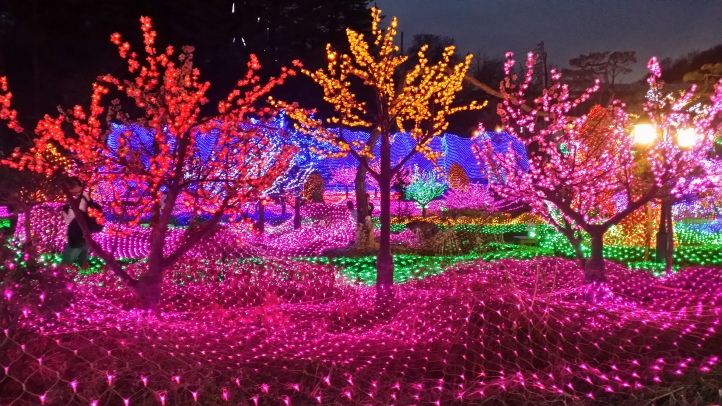If you have attended a Korean program offered by one of the language institutes in South Korea, during the cultural experience classes, you might have got the chance of learning samulnori (사물놀이) , the Korean traditional percussion music. The well-known Korean show, NANTA, has also incorporated samulnori in its performance. Let’s talk about samulnori in this blog post.
What is Samulnori?
“Samul” literally means “four objects” and “nori” literally means “play”. It is a music performance by the following four percussion instruments:
- kkwaenggwari (꽹과리) – a small brass gong;
- Jing (징) – a large brass gong;
- Janggu (장구) – an hourglass-shaped drum; and
- Buk (북) – a barrel drum.
You may watch this video for a short samulnori performance in which you can see the above four percussion instruments and get a feel of the nature of music played by samulnori.
Origin of Samulnori
Samulnori was in fact derived from pungmul (풍물) or nongak (농악) which is a form of Korean farmers’ traditional folk music. Nongak is lively rhythmic music performed by percussion bands in the open area of the villages with drums and gongs together with dancing and acrobatics. The performers wear colourful attire – a common attire is white bagging trousers, white farmers’ shoes, black short-sleeve jacket or waistcoat, a yellow sash worn diagonally around the upper body and shoulders, and a blue sash and a red sash worn around the waist. The five colours used (i.e., white, black, red, yellow and blue) are same as those used in rituals of shamanism, an ethnic religion of Korea. The performers also wear a wide-brimmed hat with a long rotatable ribbon streamer which is controlled by the head movements.
Nongak is said to be used to give blessings for a good harvest, drive away evil spirits and promote unity among the villagers in the agricultural society. Nongak has been added to the UNESCO Intangible Cultural Heritage of Humanity list since 2014. You can watch this video to see a short performance of nongak.
In 1978, Kim Duk-soo (김덕수) and his performing group brought a reduced form of nongak to the stage of the concert hall – compared to nongak performed by the village percussion bands, the performance by Kim’s group was played by a smaller number of instruments (i.e., four) and a smaller number of players (i.e., 4 to 6). Moreover, whereas nongak is played outdoor with the performers standing up and dancing, Kim’s group sat on the indoor stage during their performance. Kim’s group also adopted the nongak attire but without the hat. Kim’s performing group later adopted “SamulNori” as its name which nowadays has become the generic term for this traditional folk music genre. You can watch this video for a performance by Kim Duk-soo and his samulnori team.
Samulnori in its modern form
From time to time, Kim Duk-soo has collaborated with musicians from pop to jazz to classical music fusing samulnori with different kinds of music genres. He has recently formed a group called “Electric Samulnori” comprising four members from his samulnori team and three electric rock musicians (playing guitar, keyboard and bass) from an indie rock band. Electric Samulnori aims to combine the modern electric sounds with the traditional percussion sounds to appeal to the young generation. You can watch this video for a performance by Electric Samulnori.
NANTA, a well-known Korean show which has been performed both inside and outside South Korea, is a non-verbal performance incorporating the rhythms of samulori. While the characters in the show are busy preparing food for a wedding banquet, they beat rhythms on pots, pans and other items found in the kitchen. You can visit the NANTA website to get more information about the show. You can also watch this video for an extract of the NANTA performance.
If you visit South Korea, don’t forget to watch the NANTA show and it’s going to be an interesting experience. If you stay in South Korea for some time for study or work, you can even join the Korean culture classes to learn playing samulnori – it’s surely an interesting and unforgettable experience! Enjoy! 🙂
Reminder: The next blog post will be published on 28 May 2015. Watch this space!
References:
Kwon Ji-youn, “Nongak added to UNESCO cultural heritage list“, The Korea Times, 2014-11-28
Lee Sun-young, “The evolution of samulnori“, The Korea Herald, 2014-02-12
“Overview of Pungmul and Samulnori“, Cambridge Samulnori
“Korea: Drumming“, Virtual Instrument Museum
